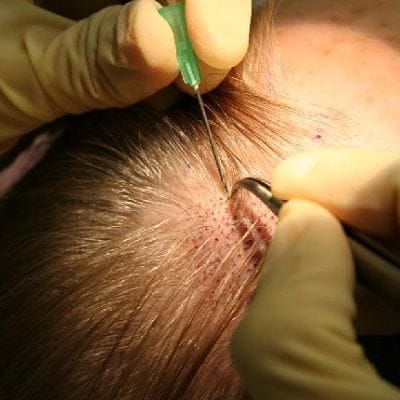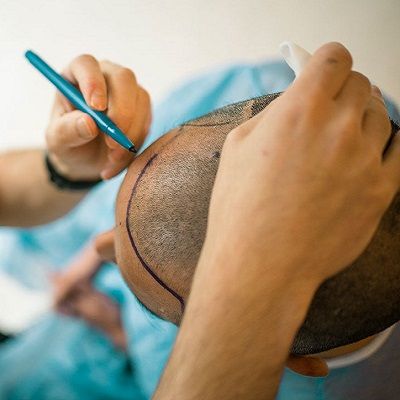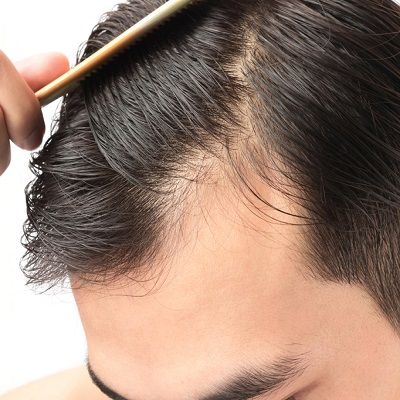
Are you searching for hair loss treatment near me?
Then this blog is especially for you. Dynamic Aesthetic Clinic is offering hair loss treatments for you to boost your confidence.
Anyone experiencing hair loss can find helpful options at the Dynamic Aesthetic Clinic like PRP treatment Dubai, FUT, and FUE to restore their hair. The cause, duration, and degree of hair loss all play a role in determining the best course of treatment.
There are many technical aspects of hair transplantation that can be bewildering. One of those subjects about which people frequently have queries is hair graft. A single follicular unit is the simplest way to describe a hair graft. Multiple hair follicles may be present in each hair graft. Due to the fact that individual hair grafts are transplanted during modern hair transplant operations, these units are crucial.
The quantity and condition of the available hair grafts will determine if your hair transplant surgery is successful, whether it is an FUE or DHI procedure. The compatibility of hair grafts in the donor area must be evaluated first before a hair transplant process. For this reason, it’s crucial to comprehend what a healthy hair graft is. A healthy hair graft needs to be viable and have at least one healthy hair follicle.
Hair Transplant:
A hair transplant is a procedure that adds hair to the scalp’s bare or thinning patches. It is frequently used for those who have already tried other hair loss therapies and is also known as hair restoration or hair replacement. Hair transplants in Dubai at Dynamic Aesthetic Clinic are carried out by dermatologists or plastic surgeons.
How Do Hair Transplants Function?
The medical professional removes grafts, or tiny pieces of skin, from body parts with healthy hair. The donor site is what healthcare providers refer to here. The area with the thickest hair is typically on your head, at the rear of your scalp. The medical professional places the grafts in the areas of the scalp that lack hair. The transplanted skin should continue to grow hair after it has healed.
What Conditions Are Treated By Hair Restoration Surgery?
There are numerous causes of hair loss. Hair loss can be permanent but it can also be transient. With regards to hair loss that is permanent and brought on by:
- An autoimmune condition called alopecia areata targets hair follicles.
- Pattern baldness, also known as androgenic alopecia.
- hormonal abnormalities or thyroid conditions.
- burns or traumatic damage.
Ideal Candidate:
An operation to replace your hair may be an option for you if you:
- a healthy state of health.
- Be reasonable in your expectations for hair replacement outcomes.
- You still have parts of your head where dense hair is growing.
What Variations Exist In Hair Transplant Surgery?
Hair transplant surgery can be done in a variety of methods, including:
- Grafting.
- Scalp shaving.
- flap surgery.
- tissue growth.
How Are Grafts Carried Out?
The most popular method of hair transplant surgery is hair grafting. A medical professional removes very little portions of the scalp that retain healthy hair. Sometimes they remove the skin with 10 to 15 hairs or less using a tiny, round punch. These grafts were formerly known as “hair plugs.” One to two hairs can be found in micro-grafts.
It might need to be done for several hours. The majority of patients are awake throughout the procedure, however, they are given medicine to numb the scalp. Depending on how much hair your provider needs to move, you might need many operations. Between operations, your scalp needs to recuperate for a few months.
How Exactly Is Scalp Reduction Done?
Scalp reduction is referred to as alopecia reduction by providers. The surgeon removes a tiny patch of the scalp’s bald skin during this surgery. They pull the neighboring hair-covered skin away from the bald spot. Then, they sew it into position.
Bald spots on the top and back of the head are best treated with a scale reduction. Typically, skin with hair surrounds these areas. To obtain complete coverage, some doctors combine scalp reduction and hair implants. Similar to grafting, scalp reduction typically simply calls for a topical numbing agent. You do not, therefore, require general anesthesia.
How Is A Flap Procedure Carried Out?
If you have significant bald patches near the front of your scalp, your doctor might advise flap surgery. Over the course of a few weeks, flap surgery is performed in stages. Three sides of the donor location are sliced invisibly by the surgeon. The fourth side is still connected and continues to receive its original blood flow. The surgeon can cut the flap and elevate it over bald spots with the aid of this procedure. General anesthesia is required for flap surgery.
How Do You Perform Tissue Expansion?
Your healthcare professional might do tissue expansion surgery if you have a burn-related deformity or scalp baldness. The following steps are involved in tissue expansion, which calls for general anesthesia:
An implant is inserted beneath the scalp by a reconstructive surgeon. They refer to the balloon-like object as a tissue expander.
The expander is gradually inflated over weeks to stretch the skin.
The stretched skin is used in a second treatment by the surgeon to cover the bald spot.
What Are The Dangers Of Having A Hair Transplant?
The hazards of a hair transplant are the same as those of any surgery. These consist of:
- sensitivity to anesthesia.
- a lot of blood loss.
- Grafts or flaps that failed.
- Infection.
- a loss of scalp sensation.
- Scarring.
What Negative Effects Might A Hair Transplant Procedure Have?
Most hair transplant surgery side effects are transient. On your scalp, at the donor site, or where the new hair is, you can encounter the following problems:
- scabs or crust.
- Itching.
- loss of emotional
- suffering or throbbing
- Swelling.
- Tightness.
What Advantages Come With Hair Restoration?
The following are possible advantages of hair restoration:
- fewer bald spots and a fuller head of hair.
- a higher sense of self.
- permanent remedy for hair loss.
Recovery Time:
The majority of hair transplant surgeries are outpatient procedures, so you can return home the same day as the treatment. The type of transplant you receive will determine how quickly you recover. You might be able to in the days following surgery:
Day 1: Take off the bandages.
Day 2: Wash your hair
Day 3 to 5: Start light activities and go back to work.
After 10 days: Take out the stitches (done by your healthcare provider).
After 3 weeks: Return to exercise or sports.
How Long Do A Hair Transplant’s Effects Last?
It might take up to a year before you see the full results of a hair transplant as the graft or flap heals and the transplanted hair may begin to fall out. That is typical. The hair ought to regrow. To get a natural-looking result, you may need many “touch-up” hair transplant procedures.
When Should I Schedule A Consultation For a Hair Transplant?
After surgery, you’ll probably see your healthcare practitioner for several follow-up appointments. They’ll check to see if your scalp is recovering properly. In contrast, if you have any of the following issues, get in touch with your provider right away:
- an unresponsive fever.
- Your scalp is bleeding excessively.
- Extreme scalp pain or redness.
- Signs of infection, such as pus pouring in green or yellow color from your scalp’s incisions.
Make A Consultation!
Before having hair loss treatment in Dubai, seek an expert. This session answers questions. For best outcomes, choose an experienced, board-certified hair transplant surgeon. At Dynamic Aesthetic Clinic, all surgeons are board-certified. We’re always available. All patients receive a free consultation.











